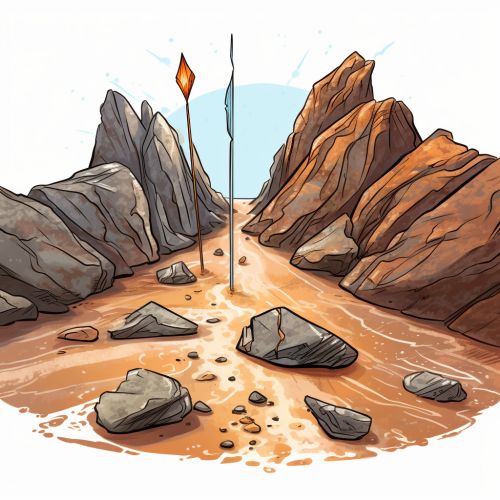Rock Cycle
Introduction
The rock cycle is a fundamental concept in geology that describes the dynamic transitions through geologic time among the three main rock types: sedimentary, metamorphic, and igneous. The rock cycle illustrates the processes by which these rock types are formed and converted to other rock types.


Sedimentary Rocks
Sedimentary rocks are formed from the accumulation of sediments, such as sand or minerals, that are transported by water, wind, or ice. These sediments are deposited over time, often in layers, and become compacted under pressure to form rock. Sedimentary rocks can also be formed from the remains of plants and animals.
Metamorphic Rocks
Metamorphic rocks are formed when existing rocks are subjected to high temperatures and pressures, causing physical or chemical changes. This process, known as metamorphism, can occur when rocks are deeply buried beneath the Earth's surface or come into contact with molten rock.
Igneous Rocks
Igneous rocks are formed when molten rock, or magma, cools and solidifies. This can occur either beneath the Earth's surface, resulting in intrusive igneous rocks, or on the Earth's surface, resulting in extrusive igneous rocks.
Rock Cycle Processes
The rock cycle involves several key processes that contribute to the formation, transformation, and recycling of rocks. These processes include weathering, erosion, sedimentation, metamorphism, and melting.
Weathering and Erosion
Weathering is the process by which rocks are broken down into smaller pieces or dissolved in water. This can occur through physical weathering, where rocks are broken down by mechanical processes, or chemical weathering, where rocks are broken down by chemical reactions.
Erosion is the process by which weathered rock and soil are moved from one location to another. This can occur through the action of water, wind, ice, or gravity.
Sedimentation
Sedimentation is the process by which eroded material is deposited. This can occur in a variety of environments, including rivers, lakes, oceans, and deserts. Over time, these sediments can become compacted and cemented together to form sedimentary rocks.
Metamorphism
Metamorphism is the process by which existing rocks are transformed into metamorphic rocks through heat and pressure. This can occur when rocks are buried deep beneath the Earth's surface or when they come into contact with magma.
Melting and Solidification
Melting is the process by which rocks are transformed into magma. This can occur when rocks are subjected to high temperatures, either from the Earth's internal heat or from the heat of magma.
Solidification, or crystallization, is the process by which magma cools and solidifies to form igneous rocks. This can occur either beneath the Earth's surface, resulting in intrusive igneous rocks, or on the Earth's surface, resulting in extrusive igneous rocks.
Conclusion
The rock cycle is a continuous process that has been occurring for billions of years. It plays a crucial role in shaping the Earth's landscape and provides valuable insights into the Earth's past. Understanding the rock cycle can also help us predict future geological events and inform our use of natural resources.
